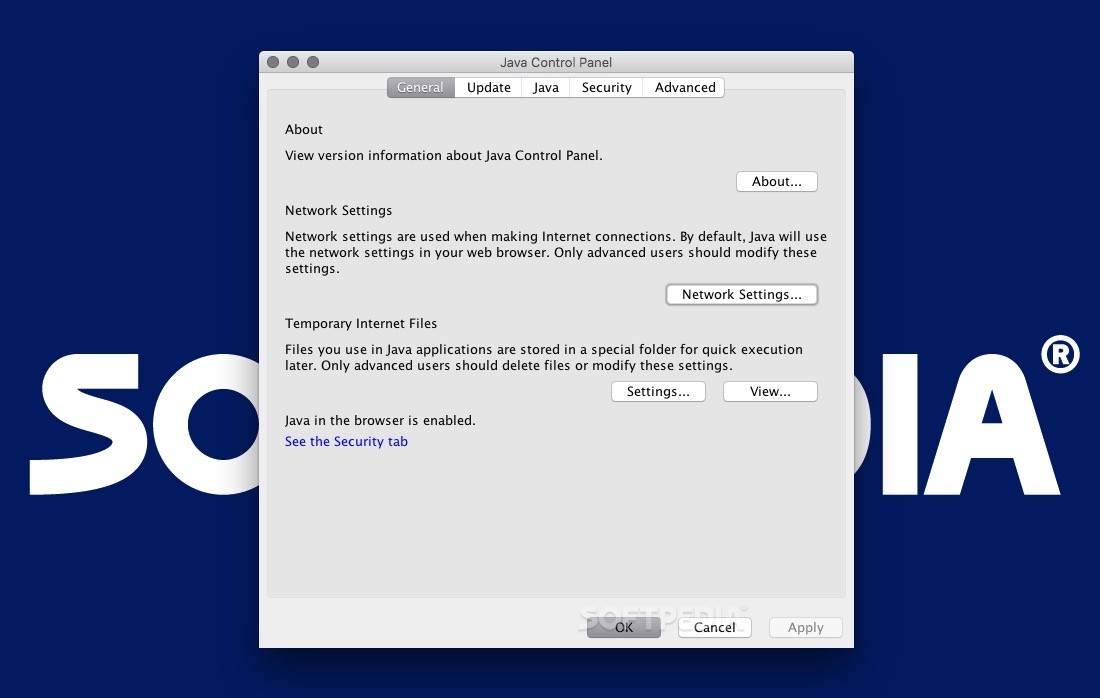- To install the JDK on macOS: Download the JDK.dmg file, jdk-10.interim.update.patch-macosx-x64.dmg. Before the file can be downloaded, you must accept the license agreement. From either the browser Downloads window or from the file browser, double-click the.dmg file to start it.
- Jdk 8uversion macosx amd64 dmg - Downloader.dmg 146.44KB jre 8u65 macosx x64 dmg - Downloader.dmg 146.44KB Splice Sounds Scott Storchs Still Storch Vol. 1 (WAV) - Downloader.dmg 146.43KB.
Click the red down arrow and download and install “Mac OS X” jdk-8u131-macsosx-x64.dmg” Note the “u131” may change as updates are often released. GoTo your Downloads folder and double click on the file: jdk-8u131-macosx-x64.dmg 5. Jdk-8uversion-macosx-x64.dmg Where version is 6 or later.
This topic includes the following sections:
Jdk 8uversion Mac Os X X64 Dmg Download
System Requirements for Installing the JDK on macOS
The following are the system requirements for installing the JDK on macOS:
Any Intel-based computer running macOS.
Administrator privileges.
You cannot install Java for a single user. Installing the JDK on macOS is performed on a systemwide basis for all users. Administrator privileges are required to install the JDK on macOS.
Jdk 8uversion Mac Os X X64 Dmg Free
Determining the Default JDK Version on macOS
When starting a Java application through the command line, the system uses the default JDK.
You can determine which version of the JDK is the default by entering java -version in a Terminal window. If the installed version is 12 Interim 0, Update 0, and Patch 0, then you see a string that includes the text 12. For example:
To run a different version of Java, either specify the full path, or use the java_home tool. For example:
Jdk-8uversion-macosx-x64.dmg
$ /usr/libexec/java_home -v 12 --exec javac -version
Installing the JDK on macOS
- Download the JDK
.dmgfile,jdk-12.interim.update.patch-macosx-x64.dmg.Before the file can be downloaded, you must accept the license agreement.
- From either the browser Downloads window or from the file browser, double-click the
.dmgfile to start it.A Finder window appears that contains an icon of an open box and the name of the.pkgfile. - Double-click the
JDK 12.pkgicon to start the installation application.The installation application displays the Introduction window. - Click Continue.
- Click Install. A window appears that displays the message: Installer is trying to install new software. Enter your password to allow this.
- Enter the Administrator user name and password and click Install Software.The software is installed and a confirmation window is displayed.
.dmg file if you want to save disk space. Uninstalling the JDK on macOS
You must have Administrator privileges.Note:
Do not attempt to uninstall Java by removing the Java tools from /usr/bin. This directory is part of the system software and any changes will be reset by Apple the next time that you perform an update of the OS.
- Go to
/Library/Java/JavaVirtualMachines. - Remove the directory whose name matches the following format by executing the
rmcommand as a root user or by using thesudotool:/Library/Java/JavaVirtualMachines/jdk-interim.update.patch.jdkFor example, to uninstall 12 Interim 0 Update 0 Patch 0:
$ rm -rf jdk-12.jdk
Installation FAQ on macOS Platform
This topic provides answers for the following frequently asked questions about installing JDK on macOS computers.
1. How do I find out which version of Java is the system default?
When you run a Java application from the command line, it uses the default JDK. If you do not develop Java applications, then you do not need to worry about this. See Determining the Default JDK Version on macOS.
2. How do I uninstall Java?
See Uninstalling the JDK on macOS.
3. After installing Java for macOS 2012-006, can I continue to use Apple's Java 6 alongside the macOS JDK for Java 12?
If you want to continue to develop with Java 6 using command-line, then you can modify the startup script for your favorite command environment. For bash, use this:
$ export JAVA_HOME=`/usr/libexec/java_home -v 12`

Some applications use /usr/bin/java to call Java. After installing Java for macOS 2012-006, /usr/bin/java will find the newest JDK installed, and will use that for all of the Java-related command-line tools in /usr/bin. You may need to modify those applications to find Java 6, or contact the developer for a newer version of the application.
4. Can I restore Apple Java after uninstalling Oracle Java?
Go back to Apple Java using the following instructions:
Uninstall Oracle Java by deleting the plug-in file. From a command-line, enter:
$ sudo rm -rf '/Library/Internet Plug-Ins/JavaAppletPlugin.plugin'Create a symlink using the following command, entered on a single line:
$ sudo ln -s /System/Library/Java/Support/CoreDeploy.bundle/Contents/JavaAppletPlugin.plugin '/Library/Internet Plug-Ins/JavaAppletPlugin.plugin'
5. What happened to the Java Preferences app in Application Utilities?
The Java Preferences app was part of the Apple Java installation and is not used by Oracle Java. Therefore, macOS releases from Apple that do not include Apple Java will not include Java Preferences.
Although, technically, I’ve done some Java programming before (around 2008), I’m more or less starting from scratch here. I’m getting set up to write some Java code on my Ubuntu machine (“ooby”). Getting started with Java on a Linux-based system requires the Java SE Development Kit (currently JDK 8) and a text editor. I use nano because I’m a pleb. (I once coded a website entirely in notepad on Windows and made all of the graphics in paint. I’ve since become only slightly more sophisticated.) The JDK can be installed very easily on Ubuntu, with just an apt-get:
Apparently, this is all that needs to be done. Then, a “Hello World” program can be written (saved as HelloWorldApp.java):
This can be compiled and run with the following commands:
where the output is seen after the java command. That’s it! All set up to code some Java. Now, to set up the same thing on my MacBook Air (“airy”). I downloaded the JDK for Mac OS (“jdk-8uversion-macosx-x64.dmg”) from this page. You need to create an Oracle account to download this software. Installing the JDK *.dmg file allows the above code to run on Mac OS, as well.